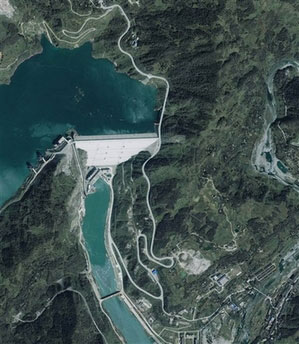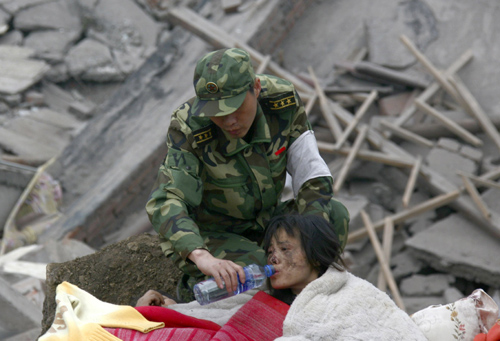Quake deaths estimated over 50,000 in Sichuan alone
(China Daily/Xinhua/Agencies)
Updated: 2008-05-15 22:16
Updated: 2008-05-15 22:16
"Within 72 hours after the disaster is the critical period. Generally, the sooner the victims are rescued, the better," Liang Guiping, the chief engineer of Shijiazhuang Bureau of Seismology, told CCTV.
Wang Zhenyao, director of the disaster relief department of the Ministry of Civil Affairs, told a press conference on Tuesday that transportation hurdles and the huge number of victims were the two major difficulties facing rescue and relief workers.
Meanwhile, huge amounts of relief materials are required, Wang said, adding that up to 60,000 tents are needed in Mianyang alone, putting further pressure on transport.
Still, there was encouraging news from many sites: After being trapped more than three days under debris, a 22-year-old woman was pulled to safety in Dujiangyan.
|
|
Covered in dust and peering out through a small opening, she was shown waving on CCTV shortly before being rescued.
"I was confident that you were coming to rescue me. I'm alive. I'm so happy," the unnamed woman said on CCTV.
Secondary disasters
Minister of Water Resources Chen Lei said on Thursday that damaged water infrastructure, including reservoirs and hydropower plants, poses a threat to flood control and security in quake-stricken regions.
 This Sept. 14, 2007 picture released by GeoEye Satellite Image shows the Zipingpu Dam, upriver from the town of Dujiangyan, Sichuan, China. [Agencies] |
Chen, who is also head of the ministry's command center for disaster rescue and relief operations, said Sichuan had a large number of reservoirs, many of which had sustained significant damage during the quake.
The National Development Reform Commission said the earthquake had damaged 391 dams. It said two of the dams were large ones, 28 were medium-sized and the rest were small ones.
More than 2,000 troops were sent to work on the Zipingpu dam, which lies on about 6 miles up the Minjiang river from the badly damaged city of Dujiangyan.
Also unknown was the extent of damage to hydropower plants owing to inadequate management systems and poor data collection, he said.
It is crucial to prevent secondary disasters, and control floods at damaged reservoirs, hydropower plants and dikes, he stressed.
He noted that it is necessary to study and judge potential dangers at these facilities by analyzing satellite and other aerial images.
Earlier in the day, the Water Resources Ministry said the Zipingpu dam, near the quake epicenter in Wenchuan, is structurally stable and safe.
But the multi-functional facility sustained some damage during the quake, including cracks at the top and collapsed workshops, according to the emergency response office of the Sichuan provincial government.
|
||
|
||
|
|
|
|


